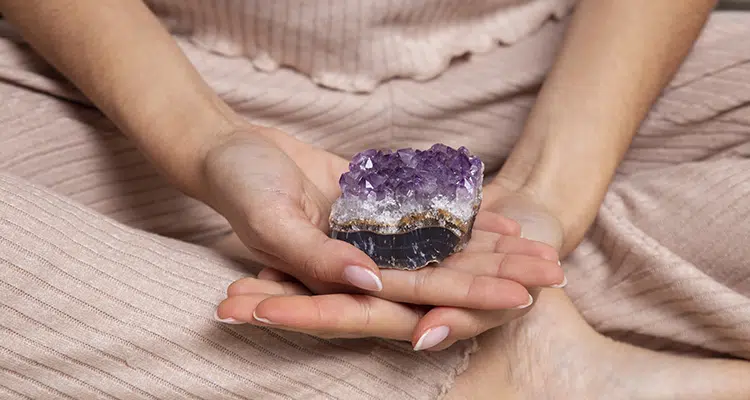Prazosin for Sleep: Does it Work and Is it Safe?
According to the CDC, over 47% of adults in America suffer from hypertension, which is also defined as a systolic blood pressure of 130 mmHg or greater or a diastolic blood pressure of 80 mmHg or greater.
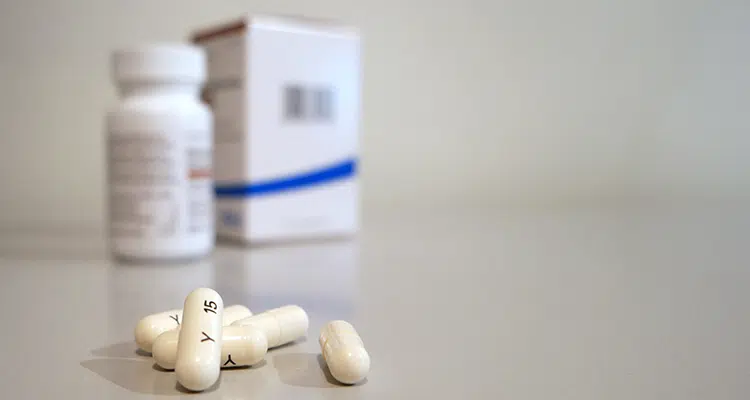
Hypertension (or high blood pressure) can cause a wide variety of serious health risks and ailments including damaged arteries that lead to heart disease, chest pain, and stroke. Signs you may be suffering from undiagnosed hypertension include lightheadedness, fatigue, blurred or double vision, headache, shortness of breath, and heart palpitations.
If your doctor suspects you’re suffering from high blood pressure, they may recommend a medication such as Prasozin. Used to treat hypertension, this alpha-blocker may offer other added benefits – including relief from certain sleep disturbances. In this article, we’ll look closer at Prazosin for sleep to determine if this medication is a safe option for easing insomnia symptoms and helping you improve your sleep quality.
Content
What is Prazosin and How Does it Work?
Prazosin is a popular drug used to treat high blood pressure – sometimes alone and sometimes in combination with other medications. Prazosin is an alpha-blocker that works by relaxing blood vessels in the body so that blood can move more freely. High blood pressure is when the force of the blood against the walls of your arteries is too high. By relaxing blood vessels, Prasozin helps reduce this pressure and facilitates the flow of blood.

Prazosin is sometimes used to treat other conditions including congestive heart failure, adrenal gland tumors, an enlarged prostate (not associated with cancer), Raynaud’s disease), and sleep issues associated with PTSD (post-traumatic stress disorder). Following a traumatic or life-threatening event, some people develop a severe anxiety disorder that involves flashbacks of the event and panic attacks, which affects their ability to achieve quality sleep. Studies show that Prazosin may help reduce anxiety and the frequency of these flashbacks and nightmares, helping patients feel more relaxed and able to fall and stay asleep.
Many people with PTSD report less trouble falling asleep and more trouble staying asleep. Waking up frequently throughout the night makes it difficult to enter REM sleep or achieve the deep, restorative sleep your brain and body need. Prazosin works to block the alpha 1 receptor in the brain that produces norepinephrine, the chemical responsible for boosting your body’s arousal and how it responds to external stimuli.
Nearly 20% of soldiers that return from war suffer from PTSD. In an effort to stay alert and alive in combat situations, the alpha 1 receptors become more sensitive in combat settings. Unfortunately, upon returning home, these receptors don’t become less sensitive, making it difficult for many veterans to block out external distractions, stimuli, and triggers. Other individuals with PTSD may also have more sensitive alpha 1 receptors following whatever traumatic event caused their condition. Prazosin can help reduce sensitivity to external stimuli, therefore, making it easier for both veterans and other PTSD sufferers to improve their sleep quality and duration.
Another study of patients suffering from different sleep disorders indicated that Prazosin significantly increased both total sleep time and REM sleep time. This indicates that the medication may be a viable treatment for insomnia sufferers and not just those facing sleep disturbances as a result of PTSD.
What is High Blood Pressure and Why is it Dangerous?
People with high blood pressure (also referred to as hypertension) are at an increased risk of damaging their blood vessels, heart, brain, kidneys, and other major organs. Left untreated, this can lead to a stroke, heart failure, heart attack, heart disease, kidney failure, loss of vision, and other serious and life-threatening conditions.
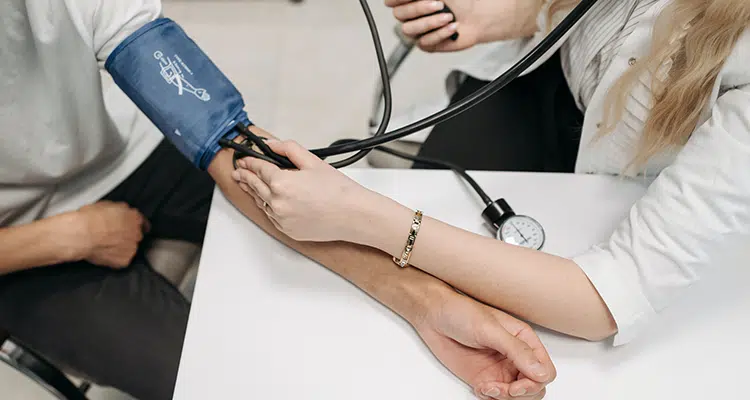
Prazosin can help maintain healthy blood pressure levels, preventing these serious health complications. In addition to medication, many patients are urged to make certain lifestyle changes like reducing their salt and fat intake, losing weight (if they’re overweight or obese), getting 30 minutes of exercise per day, avoiding smoking cigarettes, and only consuming alcohol in moderation. All of these changes can not only reduce your blood pressure but will also promote a healthier overall lifestyle, including better sleep.
Prazosin Dosage and Proper Use
In order to experience the benefits of Prazosin for sleep or treating PTSD, hypertension, and other conditions, you need to take the proper dosage at the right times. Different patients with different conditions, genetic makeup, and health histories will require a different dosage of Prazosin, which is why it’s important to follow both your doctor’s orders and the directions on the medication’s label.
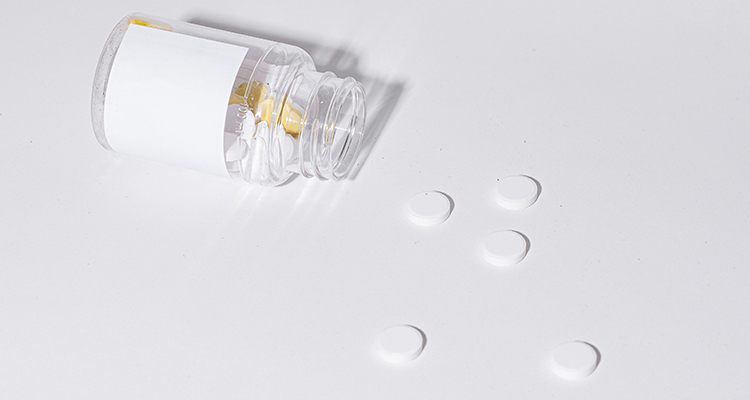
The amount you take is based primarily on the type of medication and its strength. Other factors include how many doses you take each time, how much time lapses between doses, how long it’s been prescribed for, and what condition you’re treating.
Prazosin comes in capsule form and is taken orally twice or three times per day, depending on your diagnosis. Most adults start by taking 1 mg of Prazosin but shouldn’t exceed 20 mg in a 24-hour period. However, some reports suggest that veterans struggling with PTSD and chronic sleep deprivation may take between 25 mg and 50 mg of Prazosin per day. As of this writing, Prazosin hasn’t been approved for use in children. It’s important to note that Prazosin works to control high blood pressure, it’s not a cure. If you miss a dose, take it as soon as possible unless it’s almost time for your next dose. In this case, skip the missed dose and go back to your normal schedule. Never take a double dose of Prazosin.
Potential Side Effects of Prazosin
As with any medication, regardless of the reason you’re taking Prazosin, there are side effects to consider. The most common side effects include dizziness, increased heart rate, and sleepiness. This last side effect is one reason some people turn to this medication as a sleep aid.
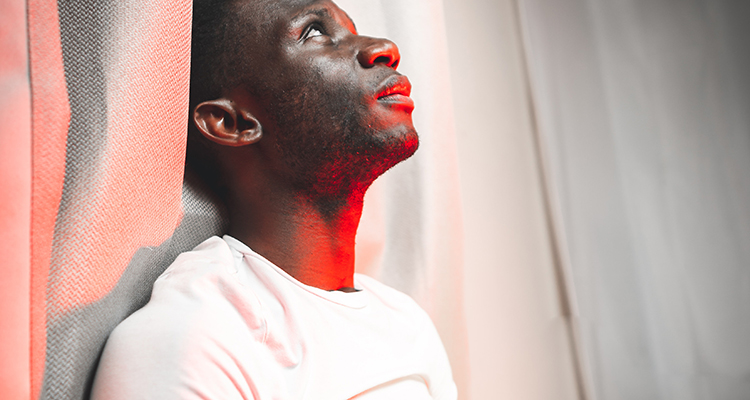
Less common side effects include
- Difficulty breathing
- Swelling
- Cold sweats or chills
- Blurred vision
- Swelling
Rare, but serious side effects of Prazosin include
- Bloating or constipation
- Loss of appetite
- Nausea or vomiting
- Indigestion
- Stomach pains in the side, abdomen, or back
- Yellowing of the skin or eyes (jaundice)
- Dark urine
- Loss of sexual ability or desire
- Inability to achieve or keep an erection
- Prolonged or painful erection lasting more than 4 hours
- Fever
Some patients reported the following side effects while taking Prazosin but the frequency and risk are undetermined.
- Skin rash or itching (including hives)
- Confusion
- Unusual weakness
- Difficulty swallowing
- Jaw, arm, or back pain
- Coughing
- Slow heartbeat
- Chest pain, tightness, or discomfort
- Eye pain or swelling
Most common side effects of Prazosin don’t require medical attention and subside on their own as your body adjusts to the medication. You can also try a few at-home remedies to reduce the effects of the medicine or even prevent them.
Here are some of the more commonly reported symptoms that have a minimal effect on your ability to function and don’t often require medical attention, but may if they persist too long.
- Headache
- Drowsiness, feeling sluggish, or an overwhelming lack of energy
- Dry mouth
- Diarrhea
- Feeling sad, hopeless, or empty (and other signs of depression)
- Nervousness
- More frequent urination or trouble urinating
- Stuffy or bloody nose
- Dizziness or a sensation of spinning
- Trouble sleeping
Some, more rare, side effects of Prazosin that may still disappear on their own include
- “Pins and needles” feeling on your skin
- Ringing or buzzing in the ears or hearing loss
- Muscle and joint pain or stiffness
- Sweating
- Hallucinations
- Loss of or thinning hair
- Decreased mobility or trouble moving
- Redness of the neck, chest, and arms
- Loss or lack of strength
- Feeling of overall warmth
If any of these symptoms persist for more than a few days or you’re concerned, call your healthcare provider immediately and stop taking Prazosin until directed otherwise.
Precautions and Drug Interactions to Consider
Before you take Prazosin for high blood pressure, PTSD, insomnia, or any other ailments, it’s important to share your full medical history with your doctor. Certain conditions and medications can put you at greater risk of experiencing some of the above-mentioned side effects, including those that are more serious or even life-threatening.

It’s also important to schedule regular follow-up visits with your doctor to monitor your progress, ensure that the medication is working properly, and make any adjustments to the dosage if needed. Your doctor may require a blood or urine test to find the cause of persistent and unwanted side effects.
It’s common for patients to experience lightheadedness or dizziness when standing from a seated or lying position. Try getting up slowly to lessen these effects. If you still feel dizzy, sit or lay down to prevent fainting and unwanted injury. Rest for a few minutes before standing again do so with the assistance of either another person or a piece of furniture. Drinking alcohol can worsen these symptoms.
If you’re physically active during the day, be sure to drink plenty of water since Prazosin can cause excessive sweating and may lead to dehydration. You may also notice you feel less alert and increasingly drowsy during the day. If so, avoid driving or operating any machinery or other dangerous equipment until your body adjusts to the medicine.
Men taking Prazosin who experience an erection lasting more than 4 hours should seek medical attention immediately to prevent permanent impotence. Let your doctor know before you take other prescriptions, OTC medications, or even vitamins and supplements to avoid unwanted effects or interactions.
Other Important Information About Prazosin

Before taking Prazosin for hypertension, PTSD, sleep, or other approved conditions, there are a few other things to consider.
- It’s important to keep all appointments with your doctor and laboratory for routine blood work. When taking Prazosin, your blood pressure should be checked regularly to see how your body is adjusting and responding.
- Keep a written list of both the OTC and prescription medications you’re taking, including vitamins and dietary supplements. Always keep this list up to date.
- Brand names of Prazosin include Minipress® and Minipress® XL
- Store Prazosin in a tightly closed container in a cool, dry place and out of reach of children.
Adopt a Healthy Lifestyle that Includes Quality Sleep
The best way to improve your sleep quality and reduce both stress and anxiety is to adopt healthy sleep habits during the day and at night. While it’s important to create a nighttime routine that promotes good sleep, the things you do (or don’t do) during the day can also impact your sleep quality.
Here are a few ways to improve not only your sleep hygiene but also your overall health, which may reduce your need for medications like Prazosin to treat conditions including hypertension.

Exercise Daily
Daily exercise is essential for everyone to lead a healthy, happy, and long life. Physical activity helps build and maintain strong bones and muscles, strengthens your immune system, regulates your mood, and improves your sleep quality. When you exercise for just 30 minutes a day, especially in the morning, it can lead to deeper, more restorative sleep at night. You may even notice it reduces your sleep latency (the time it takes you to fall asleep), because your body is tired and more prepared for sleep than if you skipped your morning workout.
Kill two birds with one stone and take a walk outside in the sunshine where you’ll also get your daily dose of vitamin D and reap the benefits of light exposure for sleep. Studies show that exposure to natural sunlight during the day helps balance your body’s circadian rhythm, causing you to naturally get tired and awake at the same times each day.
Maintain a Balanced Diet
A healthy exercise routine and a balanced diet go hand in hand. The foods you eat and the ones you avoid have a direct effect on your sleep quality, weight, mood, and overall health. For example, fast foods, fried foods, and foods high in salt and fat can all cause hypertension, resulting in the need for medication like Prazosin. Additionally, these foods cause weight gain and can lead to myriad other health complications including heart disease, diabetes, and even obesity which is the leading cause of sleep apnea, a serious and dangerous sleep disorder if left untreated.
Swap these high-fat foods for healthier, more nutritious options like whole grains, fruits, vegetables, lean meats, and fish. Avoid eating meals that are too heavy too close to bedtime. This can cause an upset stomach and indigestion, which are two common side effects already associated with Prazosin. You should also avoid stimulants too close to bedtime including coffee and other caffeinated beverages. Instead, drink a soothing herbal tea as part of your nighttime routine.
Reduce Stress and Anxiety
Whether you suffer from PTSD, another anxiety disorder, or just everyday stress and anxiety, racing thoughts at night can make it impossible to fall asleep. You may also find yourself waking up frequently, sometimes in a panic or due to upsetting nightmares. That’s because these anxieties and negative thoughts are coming through as your brain works to organize the information and experiences from your day. By reducing stress and anxiety before bed, you may notice you fall asleep faster and stay asleep longer, without disruption.
Try a few of these relaxation techniques leading up to bedtime and see which one works best for you.
- Take a warm bath
- Write in a journal
- Make a to-do list for the next day
- Read a book
- Drink hot tea
- Perform a mindfulness technique or meditation
- Listen to relaxing music
Limit Nighttime Use of Electronics
According to one study, 4 out of 10 people bring their cellphones to bed with them. Whether you’re scrolling social media, checking your emails, texting with friends, or even reading an ebook, exposure to the blue light emitted by digital screens like the one on your smartphone can interfere with your sleep.
When night falls, your brain naturally releases the sleep hormone melatonin. This hormone promotes relaxation, calm, and helps your brain and body transition from a state of wakefulness to sleep. Exposure to blue lights from screens including your phone, TV, or laptop, stops this process in its tracks. Your eyes recognize this blue light as a sign that it’s daytime and you should be awake and alert, causing a delay in melatonin release. Try limiting your screen time within 90 minutes of getting into bed. Swap your scrolling habit with one of the relaxing activities listed above.
Set a Consistent Sleep Schedule
Timing light exposure is one way to help align your body’s circadian rhythm. Another is to set a sleep schedule and stick to it. This involves going to bed and waking up around the same time each day. Try to set a 60-minute window for going to bed and set an alarm for the morning. This includes on weekends, holidays, and vacation. The more consistent you are with your sleep schedule, the faster your body will adjust. Before long, you’ll find yourself getting tired around the same time each night and naturally waking in the morning – sometimes, without the assistance of an alarm at all!
Create a Positive Sleep Environment
Another factor you can control is your sleep environment. This includes the physical makeup of your bedroom including everything from your bedsheets to your lighting. Creating a sleep environment that’s cool, comfortable, dark, and quiet can make it easier to fall asleep, may reduce stress at night, and help establish a healthy connection between your bedroom and sleep. Now, when you enter your sleep oasis, your brain and body will automatically recognize it’s time for sleep.
Here are some easy but impactful upgrades you can make to your bedroom to improve the environment and promote sleep.
- Invest in a comfortable and supportive mattress and pillows
- Buy breathable sheets
- Keep the room cool (the ideal temperature for sleeping is 65 degrees Fahrenheit)
- Block out light using a sleep mask or room-darkening shades
- Reduce noise disturbances using a sound machine or sleep headphones
- Remove clutter that may act as a distraction or cause increased anxiety
- Reserve your bedroom for sleep and sex only (avoid doing work, eating, or watching TV in bed)
Consider Therapy
Therapy is a viable option for treating not just sleep disorders but also PTSD, anxiety, and other mental health conditions that may be impacting your sleep quality. Cognitive behavioral therapy for insomnia (CBTi) is specifically designed to treat insomnia, helping patients establish a healthier relationship with sleep. It can also help you identify the root cause of your sleep troubles, making it easier to find and choose an appropriate treatment method.
Somnus Therapy’s online sleep therapy program utilizes CBTi to help patients overcome their sleep troubles from the comfort of their homes. Click here to learn more.










